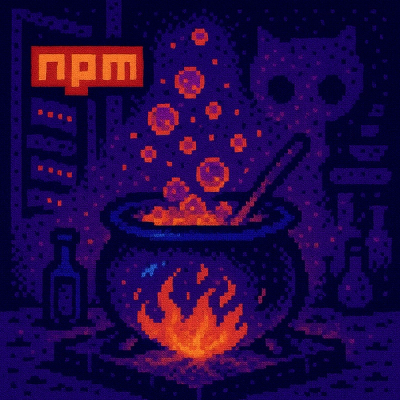
Security News
The Changelog Podcast: Practical Steps to Stay Safe on npm
Learn the essential steps every developer should take to stay secure on npm and reduce exposure to supply chain attacks.
ember-classic-decorator
Advanced tools
Decorator to aide migration from classic class system to native classes
[!NOTE]
This library isn't needed. It can safely be removed from your projects with no change to runtime or buildtime behaviors.
[!CAUTION] This library should be removed if you plan on switching to Vite. (Vite supports ember-source 3.28+)
This addon provides a dev-time only class decorator, @classic. This decorator
gets removed from production builds, and is entirely for the purpose of helping
you navigate the upgrade from Ember's classic class system to native classes
in Ember Octane!
First, install the addon:
ember install ember-classic-decorator
You should also ensure you are using the latest version of the Ember eslint plugin and enable the related eslint rules to gain the full benefits of the decorator:
// .eslintrc.js
// ...
rules: {
'ember/classic-decorator-hooks': 'error',
'ember/classic-decorator-no-classic-methods': 'error'
},
// ...
While you can now use native class syntax to extend from any Ember base class, there are still a few differences between classic classes and native classes that can be a little tricky during the conversion:
init and constructor are two separate methods that are called at different
times. If you convert a class to native class syntax and change its
init function to constructor, then it will run before any of its parent
classes' init methods. This could leave you in an inconsistent state, and
cause subtle bugs.create,
reopen, and reopenClass, which do not have native class equivalents. Some
classes will need to be redesigned to account for this.get, set,
incrementProperty, and notifyPropertyChange. In the future, most of these
methods will not be necessary, and will not exist on future base classes like
Glimmer components.@classic provides a hint to you, the developer, that this class uses classic
APIs and base classes, and still has some work to do before it can be marked as
fully converted to Octane conventions.
When installed, @classic will modify Ember classes to assert if certain APIs
are used, and lint against other APIs being used, unless a class is defined
with classic class syntax, or decorated with @classic.
The following APIs will throw an error if used in a non-classic class:
reopenreopenClassThe following APIs will cause a lint error if used in a non-classic class definition. Since we cannot know everywhere that the class is used, instances of the class may still use these methods and will not cause assertions or lint errors:
getsetgetPropertiessetPropertiesgetWithDefaultincrementPropertydecrementPropertytogglePropertyaddObserverremoveObservernotifyPropertyChangeIn addition, @classic will prevent users from using constructor in
subclasses if the parent class has an init method, to prevent bugs caused by
timing issues.
Certain classes must always be marked as classic:
EmberObjectThese must be marked as classic because their APIs are intrinsically tied to the
classic class model. To remove the @classic decorator from them, you can:
EmberObject at all, and
only use native class syntax.Other classes can be converted incrementally to remove classic APIs, including:
In order to remove the classic decorator from a class, you must:
reopen and
reopenClassgetsetgetPropertiessetPropertiesgetWithDefaultincrementPropertydecrementPropertytogglePropertyaddObserverremoveObservernotifyPropertyChangeApply the @classic decorator to any classes that should use classic APIs.
import EmberObject from '@ember/object';
import classic from 'ember-classic-decorator';
@classic
export default class Foo extends EmberObject {}
See the Contributing guide for details.
This project is licensed under the MIT License.
FAQs
Decorator to aide migration from classic class system to native classes
The npm package ember-classic-decorator receives a total of 5,721 weekly downloads. As such, ember-classic-decorator popularity was classified as popular.
We found that ember-classic-decorator demonstrated a healthy version release cadence and project activity because the last version was released less than a year ago. It has 2 open source maintainers collaborating on the project.
Did you know?

Socket for GitHub automatically highlights issues in each pull request and monitors the health of all your open source dependencies. Discover the contents of your packages and block harmful activity before you install or update your dependencies.

Security News
Learn the essential steps every developer should take to stay secure on npm and reduce exposure to supply chain attacks.

Security News
Experts push back on new claims about AI-driven ransomware, warning that hype and sponsored research are distorting how the threat is understood.

Security News
Ruby's creator Matz assumes control of RubyGems and Bundler repositories while former maintainers agree to step back and transfer all rights to end the dispute.